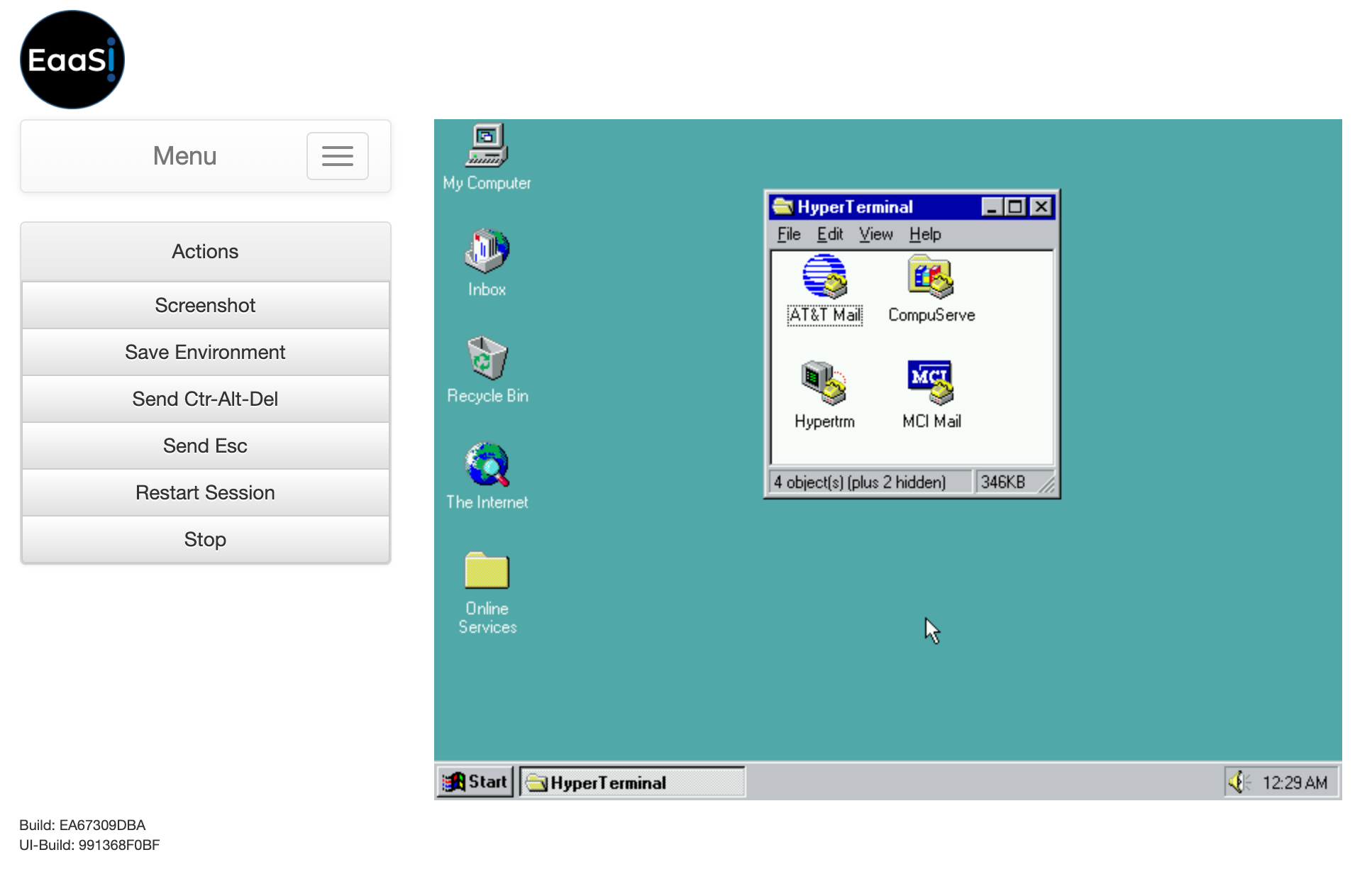Getting Eaasi in the Cloud

One of many driving factors for us to finding a container-based hosting solution like Reclaim Cloud was not just to enable a whole slew of new applications for the web, but also to dive deeper into what containers could mean for archival purposes. In fact one of the earlier conversations about the cloud I had with Jasmine Mulliken at Stanford's Digital Press centered around that and she pointed me to the Eaasi project (Emulation as a Service Infrastructure). As it turns out Chip German at UVA is also involved in the project and the idea behind it is one that I think libraries in particular thinking about digital artifacts will be excited by.
When we talk about archiving digital projects, a lot of times that means generating a static copy perhaps as HTML like with Sitesucker. But what do you do for interactive content? How might we, for example, be able to best represent that Macromedia Director project that was built in the early 90s? Maybe a video of it in action is one way, but even better if we can represent the object in its native environment. And containers give us the ability to virtualize whole operating systems which means at a click of a button we can emulate the hardware and software necessary to show an artifact exactly as it is meant to be shown.

After reading about Jim's recent challenges with personal archiving it reminded me of this project again and so I took it on myself to work this past weekend at getting it up and running and honestly, while I'm just a few days in, it's been incredible fun. Above you see a Windows 95 computer booted in an emulated environment running on Reclaim Cloud. I can install software and interact with it much like I would as a teenager in the mid-90s. It was built using Virtualbox, a free program from Oracle that lets you virtualize whole operating systems. I've found that the Internet Archive also serves as a crucial archive of early software. I have no doubt Jim will write more about our exploration of a game near and dear to his heart on Windows 3.1
Today I managed to get Windows 3.1 running on Reclaim Cloud. No really. pic.twitter.com/RlOTFo1fBZ
— timmmmyboy (@timmmmyboy) August 12, 2020
The Eaasi platform allows you to start with basic images of operating systems, and then layer on software as well as "objects". So, for example, you might have an object that is a Word Document a professor wrote in 1998. Instead of rendering it in a PDF, here we can actually take a Windows 98 computer, add Office 97 to it, and then have the document load at boot. A true native environment that is destroyed and rebuilt each time you go to view it in a matter of seconds and renders the object exactly as it was intended to be viewed. There's a demo at https://eaasi-sandbox.softwarepreservationnetwork.org/eaasi/#/portal/welcome with some open source operating systems on it and there's a longer video by Ethan Gates at Yale talking more about the patterns and workflow of using Eaasi.
The same can be said for projects being built today. How will you preserve the work you are doing on the web today so that others can still view it 30 years from now? HTML has been fairly resilient to the march of progress, but almost no one builds their sites in HTML with WordPress being much more popular. Anyone working in these environments is no stranger to the hell that is keeping plugins and themes up-to-date and attempting to maintain a work as new versions of the software as well as the underlying web server software like PHP, Apache, and MySQL. In fact fairly soon I'll be writing about new versions of PHP on Reclaim Hosting and the removal of PHP 5.6 support. It seems to me emulation is the best shot we have at ensuring that web-based projects can be maintained in the environment that they were built for without exposing a host to the risk of running outdated software exposed to the internet.
There's no doubt that containers and "cloud" systems enable a wide range of applications for the web and computing, but perhaps it also enables us to think more critically about how we might enable a preservation strategy for our own personal cyberinfrastructure. How might Reclaim Hosting serve a role to enable that for individuals in partnership with these libraries and other groups? And circling back to Stanford's Digital Press, they are doing some great work now with the folks at Webrecorder to develop new ways of archiving as well https://blog.supdigital.org/sup-webrecorder-partnership/. I'm excited to see where this goes and I would love to see a space carved out that allows for personal archival strategies in combination with the methods used by libraries and other organizations.
Now excuse my while I load up this Myst cd and explore some new worlds.
Comments powered by Talkyard.